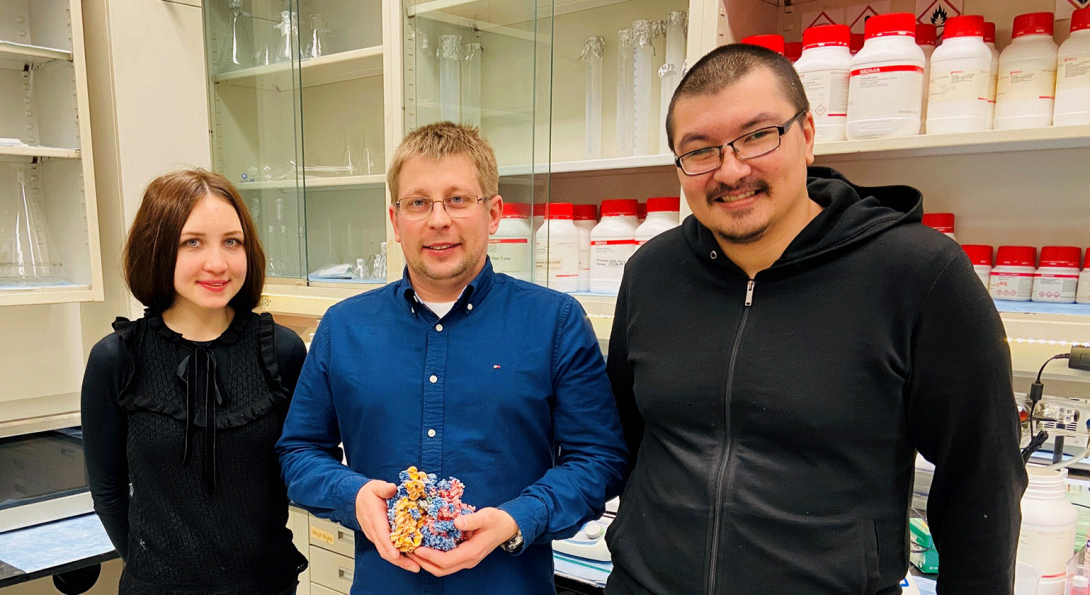Dr. Yury Polikanov and BioS graduate student Egor Syroegin publish ground-breaking research on the antibiotic-resistance mechanism

The journal Nature Chemical Biology published “Structure of Erm-modified 70S ribosome reveals the mechanism of macrolide resistance,” featuring the joint research of Drs. Yury Polikanov, Associate Professor of Biological Sciences, and Alexander Mankin, Professor, Center for Biomolecular Sciences. One of the Biological Sciences graduate students, Egor Syroegin, is the equally-contributed co-author author of the article. Their research into macrolides, a class of ribosome-targeting antibiotics, suggests a new and persuasive explanation of a key mechanism of bacterial resistance to these widely-prescribed drugs. Prior to their research study, this mechanism was unknown.
“We compared the hi-res structures of the ribosomes from sensitive and resistant bacteria and noticed that a water molecule that is needed for the tight antibiotic binding was not present in the ribosomes from the drug-resistant bugs,” said Dr. Polikanov. “We are very much excited by this discovery because we now know how exactly macrolide antibiotics interact with their target, the ribosome. This discovery is important because it will inform and facilitate the development of new antibiotics that do not need this water molecule for binding. There is a huge demand for such drugs that are able to kill even those bacteria that became resistant to the currently used drugs.”
Other co-authors are Maxim Svetlov, and Elena Aleksandrova (a visiting researcher in the Department of Biological Sciences), Gemma Atkinson of Umea University, and Steven Gregory of the University of Rhode Island. This work was supported by Illinois state startup funds, the National Institutes of Health (R21AI137584, R01GM132302, R35GM127134, and R01GM094157), the United States Department of Agriculture’s National Institute of Food and Agriculture (Hatch Project 10160130), and the Swedish Research Council (201504746 and 201901085).